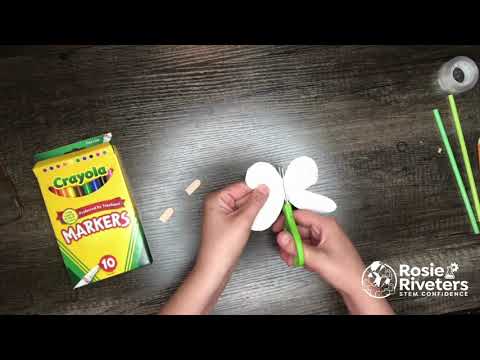Ping Pong balls can fly across the room thanks to potential and kinetic energy—and a simple rubber band! When you stretch the band back, you store energy (just like a slingshot). Letting go releases that energy, turning it into motion that launches the ball forward. The more you stretch, the more energy—and the farther it goes!
In this project created by Olivia, a member of the Rosie Innovators STEM program for young women in high school, you’ll build your own ping pong ball catapult to explore how energy can be stored and released to make things move. Ready to launch into action? Gather your materials and follow the steps below!




